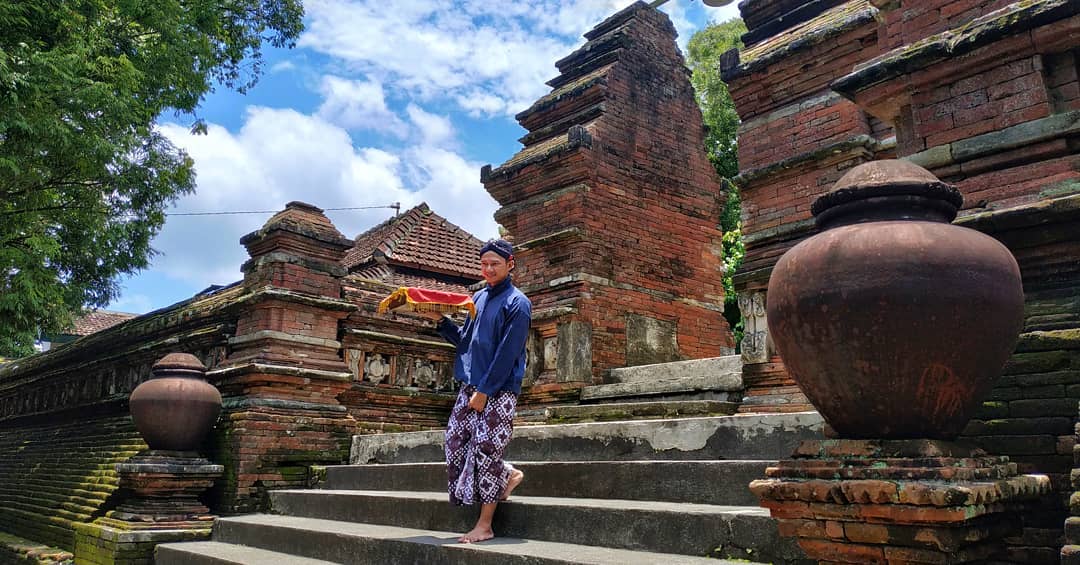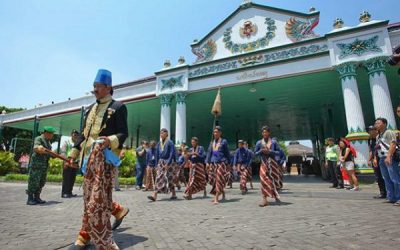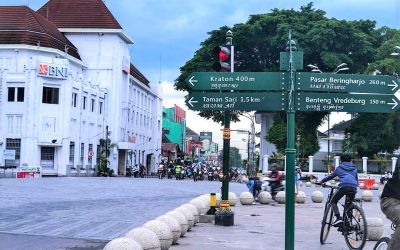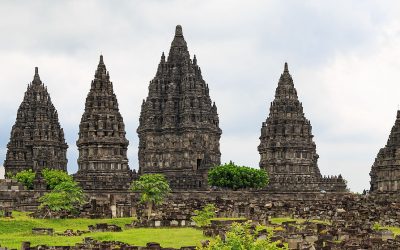Home / Batik Regions – Western Indonesia – Java Island – Yogyakarta / Imogiri Royal Cemetery in Bantul
Cultural Destination
Embrace the spirit of the place!
Imogiri Royal Cemetery in Bantul

Imogiri Royal Cemetery (photo: Ozils_88)
The Imogiri Royal Cemetery in Bantul
You may think that cemeteries are not the perfect spot to visit if you are on vacation. However, this cemetery is unique. Imogiri is the official cemetery of the descendants of the Yogyakartan and Surakartan royalty. It is a dignified and beautiful spot, as the graves are all delicately decorated. Visitors are allowed to visit it only in traditional Javanese dress which can be rent directly on the spot.
Tourist Attractions in Yogyakarta
Yogyakarta Royal Palace
The Sultan’s Palace which lies in the middle of Yogyakarta city. Here people can
Yogyakarta City of Culture
This city represents the most magnificent cultural spot of Java. Settled in 1755, Yogyakarta is
Prambanan Temple
One of the most important Hindu complex of temples built in 850 AD
Yogya
Batik Motifs
Wirasat
Wirasat or divine inspiration is a gift from God. This inspiration is symbolized by
Kawung
The Kawung motif was created by Sultan Agung Hanyokrokusumo (1593 – 1645) as a symbolic gift for
Parang Rusak
Another meaning behind this motif is an unconquerable spirit, symbolized by
Discover
Indonesian
Batik
Motifs
Singayaksa
The Singayaksa motif comes from the name of a place where Sultan Hasanuddin used to
Wakatobi
It symbolizes the coastal beauty of the Wakatobi island and the symbol of Patra symbolizes
Tampuk Manggis Sasirangan
The motif illustrates the philosophy of the mangosteen fruit, which is
Daun Sirih
This motif illustrates betel leaves that are used by Lombok communities as traditional
Gurdo Solo
Gurdo or garuda bird is the mount of the Indian god Vishnu. As the Sun Bird,
Rumah Mamuju
the Batik motif illustrates the house of Mamuju King with the stairs, located on the left of the wooden stage house
Sandeq
Sandeq Boat is a symbol of the maritime importance of the West Sulawesi region. The greatness of
Keluak Daun Pakis
The word “Keluak” is a Minang language which means twisted or tangled. The Motif of
Pucuk Rebung Riau
Pucuk Rebung symbolizes heart determination in achieving goals, good luck, and
Tabir Tanjung
Tanjung flower is a type of Cherry tree flower, which is commonly found in
Parang Rusak
Another meaning behind this motif is an unconquerable spirit, symbolized by
Buketan Bali
The Balinese bouquet (Buketan Bali) is a floral arrangement and the name is
Gonggong Siput
Gonggong (Strombus Turturella) is one type of sea snail found around
Kasih Tak Sampai
‘Kasih Tak Sampai’ is an idiom in the Indonesian language which refers to
Gentala Arasy
Built as high as 80 meters, the tower also highlights the historical side of
Bintik Tujuh
The Bintik Tujuh (Seven Dots) motif has 7 white spots and green color gradation as
Lipaq Sabe
Lipaq Saqbe contains a simple geometric classical motif with various flower decorations. This textile is
Gajah Way Kambas
The motif illustrates the Lampung’s natural reserve, the Way Kambas. it also symbolizes
Mahkota Siger
Siger is the crown of a noblewoman in ancient time. It is a symbol of femininity, strength, and
Pattimura
Pattimura is the name of an Indonesian hero who fought against colonialism in
Honai
The Honai is inspired by the traditional house of the Papuan community living in
Tifa Totobuang
The batik motifs illustrate Maluku’s traditional music instrument called
La Galigo
La Galigo is a literary work of the Buginese Epic that has 300 thousand epic lines. It is considered even
Gumin Tambun
Based on Hindu mythology, this motif symbolizes lucks, abundant wealth, and
Prada Papua
The word “Prada” in the Javanese-Indonesian dialect means a batik textile that
Bale Lumbu
This motif signifies the welfare of the ancient Sasak society. Bale also symbolizes the
Gonggong Beruntun
This motif illustrates that a person should maintain a positive attitude and
Sido Mulyo
Sidomulyo is one of the classical motifs, which is specifically used for the bride’s costume in
Tangerang Herang
Tangerang Herang motif is a symbol of Tangerang city. The Tangerang Herang batik motif consists of
Malinau Cultural Festival
You will witness a unique competition that might not be found other than in
Lok Baintan Floating Market
As you can imagine, the most authentic thing is that you can buy things and even
Kerawang Tegak Aceh
The Vertical Upright (Kerawang Tegak) Motif symbolizes a person who has a strong
Tanah Liek
The word “Tanah Liek” refers to clay in Minang language. It is also known as
Pinawetengan
The Pinawetengan Batik pattern was taken from a prehistoric inscription in
Lontara
The Lontara script itself is a typical ancient script of Bugis and Makassar communities. History records that
Pala Salawaku
This motif illustrates the unique weapons of the Maluku region, namely
Paqbarre Allo
The word “Barre” means round and “Allo” means the sunlight. This motif is interpreted as
Gorga Simeol-Meol
The Gorga Simeol-meol is a pattern of plant tendrils. it is regarded as a symbol of longevity and
Tenun Bima
The motifs are adopted from Bima woven textile. This pattern has received a great
Durian Pecah
Broken Durian motifs depict the foundation of faith. The second half signifies the mastery of
Desa Na Tolu
The Desa Na Tolu characteristic pattern symbolizes the Batak philosophy of existence and
Tikar Natuna
The Tikar Natuna motif is adapted from the traditional making of pandanus mats in
Besurek Rembulan
This batik illustrates praise for God who created the wonderful universe
Kawung
The Kawung motif was created by Sultan Agung Hanyokrokusumo (1593 – 1645) as a symbolic gift for
Besurek Rafflesia
The term “Basurek” refers to a textile that contains letters or inscriptions
Biji Kopi
The coffee seeds motif illustrates the pride of local coffee specialities in
Taiganja
Taiganja is a precious gold pendant that shows the social status of the Kaili family. It is
Cengkeh
The clove flower motif is the main commodity of the Tolitoli Regency. This motif represents
Kuda Kupang
Horses symbolize wealth. It contains noble values of virtuous characters that bring
Daun Simpor
This motif is inspired by the Simpor plant (Dillenia Suffruticosa) which is a typical
Merak Ngeram
The hatching peacock motif has a very deep meaning which refers to the sacrifice and
Angsa Duo
According to legend, the Angso duo batik motif is a pair of swans that are believed to have led Princess
Sekomandi
Its philosophical meaning is the eternal union which refers to a saying “until death do us part”
Raja Ampat
Raja Ampat motif represents the marine life at Raja Ampat archipelago in
Bomba Mawar
This motif means sacred love for family, kingdom, and God; It also illustrates
Gigi Haruan Lidi
The Gigi Haruan Lidi motif is taken from the name of the cork fish and is a symbol of
Pati-Pati Pinehiku
It symbolizes the hierarchy in society and the social status of the Mekongga
Wirasat
Wirasat or divine inspiration is a gift from God. This inspiration is symbolized by
Daun Lada Hitam
The black pepper motif represents the main commodity of Bangka Belitung
Dayak Kamang
Kamang motif is generally found in the Dayak tribe shield because it is believed to
Jupri Kembang Teh
Kembang Teh illustrates the tendrils of tea plants that grow in the highlands of
Pohon Hayat (Tree of Life)
The Batik motifs in Lampung are dominated by the acculturation of Buddhist and
Tubo Kelapa
Coconut tree is a symbol of a good character and strong mentality. It illustrates the more success a person, the more
Parang Seling
Parang Seling or “alternating daggers” is a royal batik motif. It is a feminine variant of
Manguni Minahasa
Manguni is identified as the symbol of the Minahasa people. Manguni is known as a
Jumputan Bintang
The word Jumputan means the tie-dye technique, while the word “Bintang” refers to
Leuit Sijimat
This motif reflects the daily activities of the Baduy tribe in Banten. The main ornaments of batik motif consist of:
Tengkawang Ampiek
With its many advantages, the Dayaks use this leaf in ritual ceremonies. This plant is a symbol of
Enggang Dayak
Local people beliefs that hornbills are an incarnation of the Commander of the Birds. It has supernatural
Salakanagara
Salakanagara batik motif illustrates the first kingdom in the Betawi land
Teguh Bersatu
This batik motif shows the strength of the people of Kupang. It also represents a sense of
Karawo Mahkuta
Mahkuta refers to Gorontalo’s traditional crown. It represents noble characters of
Kaganga Tanah Rejang
If Batik Besurek combines Arabic calligraphy motifs, then the Kaganga batik takes



